
I’ll bet right now you’re beginning to feel the onset of that annual Christmas tradition – the post-holiday hangover. Not that kind of hangover, but the one that always shows up sometime after December 25th.
Everything still looks festive around the house, but you’re feeling less so by the day. Maybe even by the minute.
Bits of wrapping paper keep popping up around the house, usually stuck to the bottom of your sock. The thought of eating one more Christmas cookie makes you feel a bit queasy. (They’ve gone a bit stale anyway.) And you’re going to lose it if you have to sweep up pine needles or get down on all fours to water the Christmas tree again.
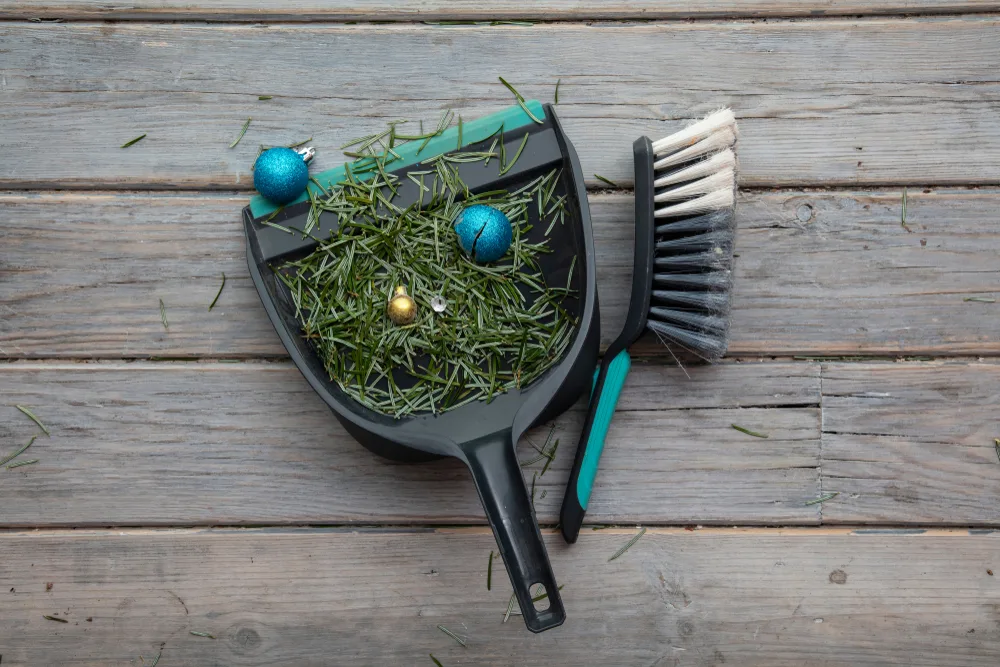
It’s time to pack up your waning holiday spirit and regain that lost corner in your living room. It’s time to dispose of your Christmas tree.
You made the right choice for the environment by choosing a real tree, but what’s the right choice for the environment when disposing of it?
Believe it or not, you’ve got plenty of options to dispose of your Christmas tree, even if you live in town.
Un-Christmas Your Tree
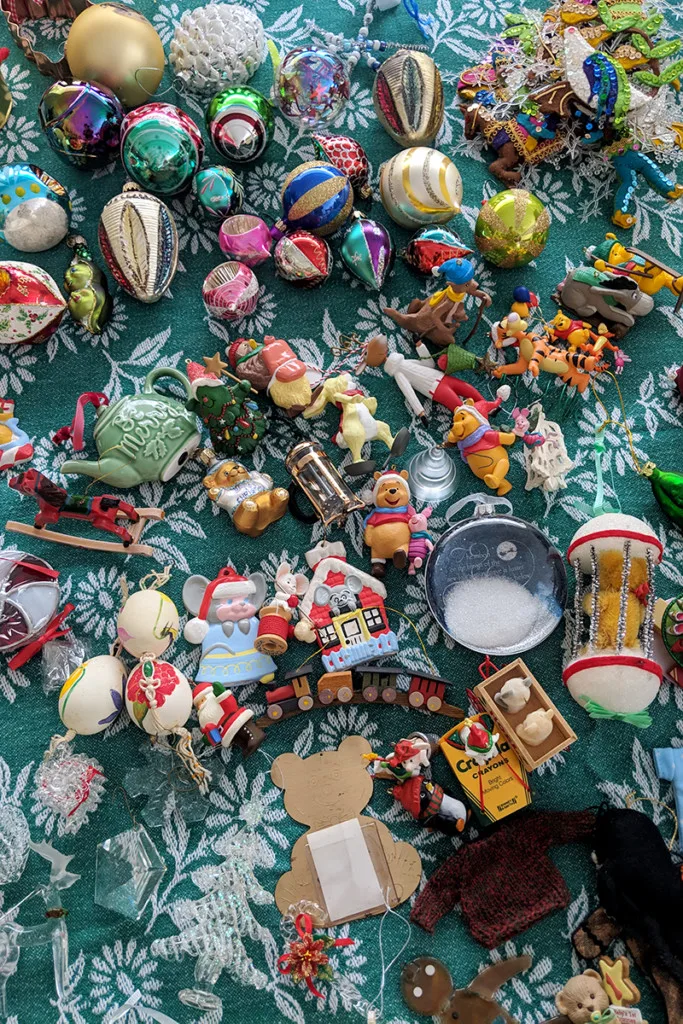
First, let’s talk about the pre-disposal prep. No matter how you choose to dispose of your Christmas tree, you need to remove all decorations. Obviously, you aren’t going to throw your ornaments out with the tree, but this also means removing things like tinsel and popcorn garlands. Your tree has to go out just like it came in.
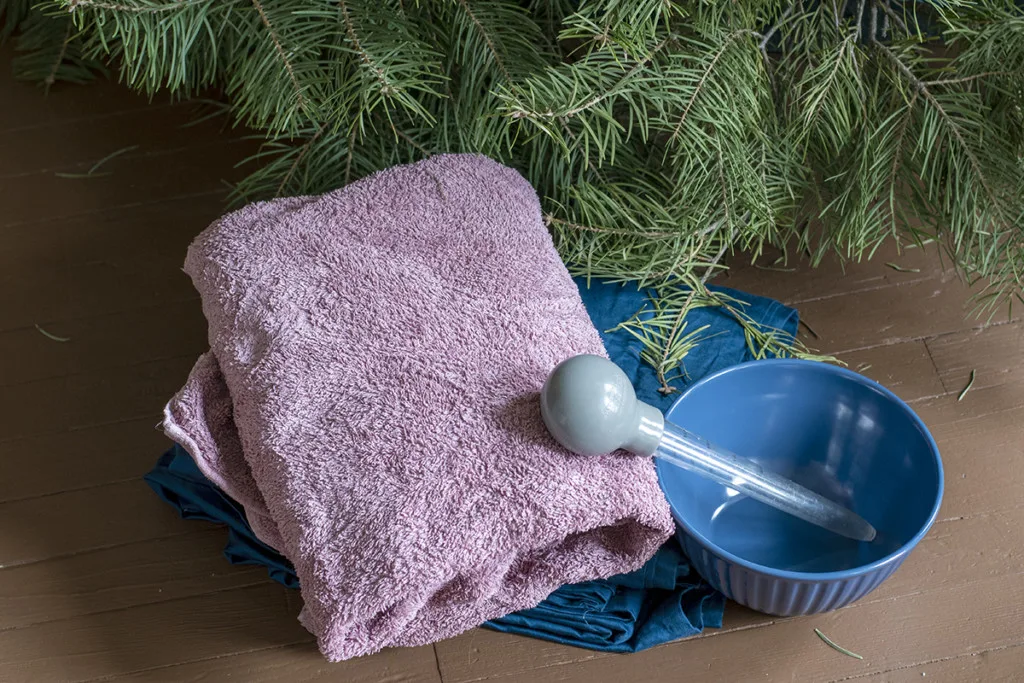
Ta-Ta to Tinsel
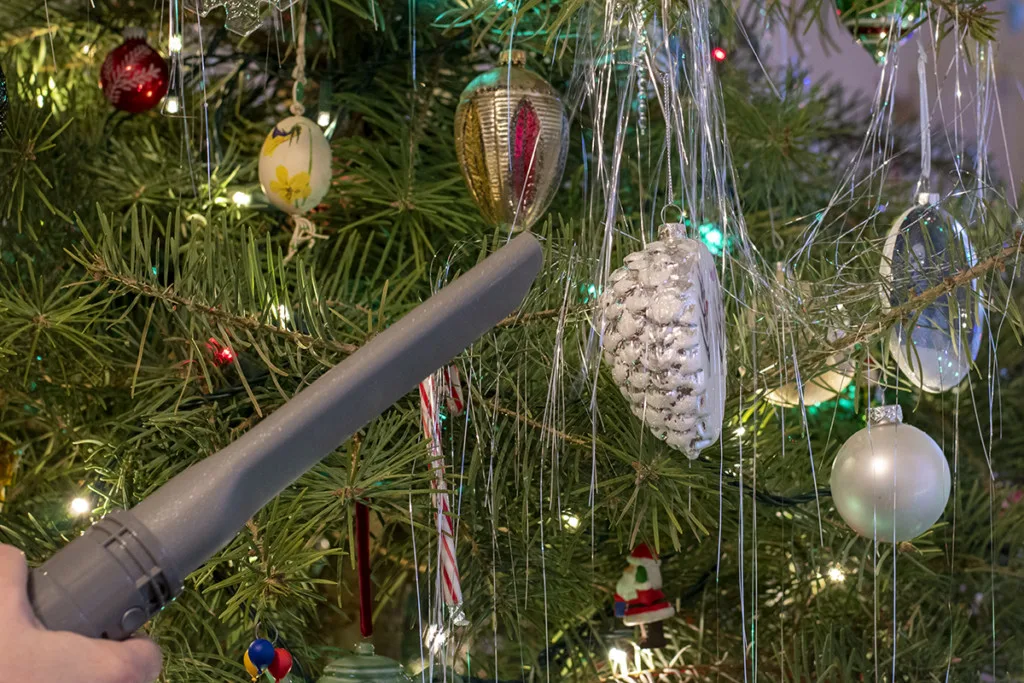
The easiest way to remove tinsel is with a vacuum cleaner. Yup, you heard correctly. I do this every year, with the ornaments on and everything. As tinsel is the last thing to go on the tree, it comes off pretty easily.
Simply hover the vacuum cleaner nozzle a couple of inches from the tree, and the tinsel gets sucked up by the vacuum, leaving the ornaments unbothered.
A Snack for the Critters
If you put a garland of popcorn and cranberries on the tree, you can put these treats out for the birds and squirrels. However, it’s a good idea to unstring the garland first to prevent animals from ingesting the string or getting caught in it.
Un-Watering the Tree
Of course, once your tree is undecorated, you still risk a mess when you tip the tree on its side to remove it from the stand. Since you did such a great job watering your tree all season long, you’ll still have water in the base. You can remove most of the water using a turkey baster.
Once you’ve suctioned out as much water from the tree stand as possible, you can wrap an old towel around the base of the tree and stand; this will soak up any remaining water that spills, keeping the mess contained.
Ditch the Plastic and Invest in a Christmas Tree Sheet
Most stores sell massive plastic trash bags for disposing of Christmas trees. Skip the extra single-use plastic and hit up your local thrift store for a king-size flat sheet. Dub it your Christmas tree sheet and use it to wrap around your undecorated tree once you’re ready to remove it from the house.
The sheet will keep the needle-mess at bay until your tree reaches its final resting place.
Once you’ve disposed of your Christmas tree, launder the sheet and tuck it in with your other Christmas decorations.
Grab your Christmas tree sheet next year when you head out to cut your tree. Wrap it around your fresh cut tree to protect the branches when putting it up on your car and bringing it in through doorways.
Save Some Needles
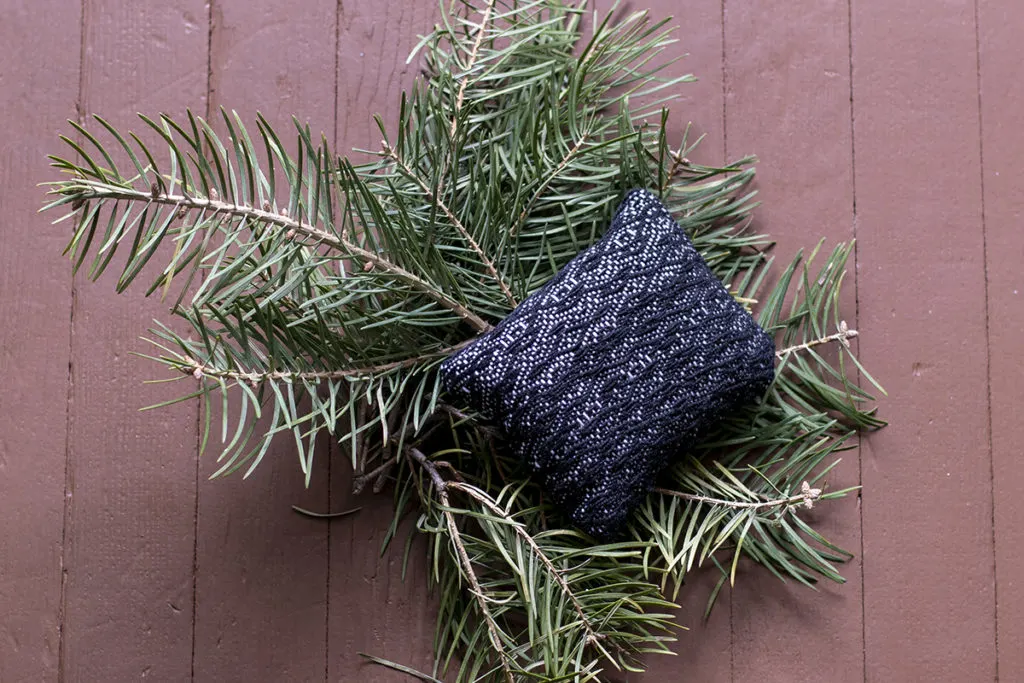
I love the smell of pine, balsam specifically. I even have a little balsam stuffed pillow on my desk for inspirational sniffing as needed. Before you pitch your tree, save some of those needles for crafts and natural potpourri. Be sure to check out our long list of things you can make with pine needles for even more great ideas.
Just remember, most commercial Christmas trees have been treated with pesticides, so don’t use the needles for anything edible. If you tromped into the forest and cut down a pristine wild Christmas tree, eat those needles to your heart’s content.
To Cut or Not to Cut
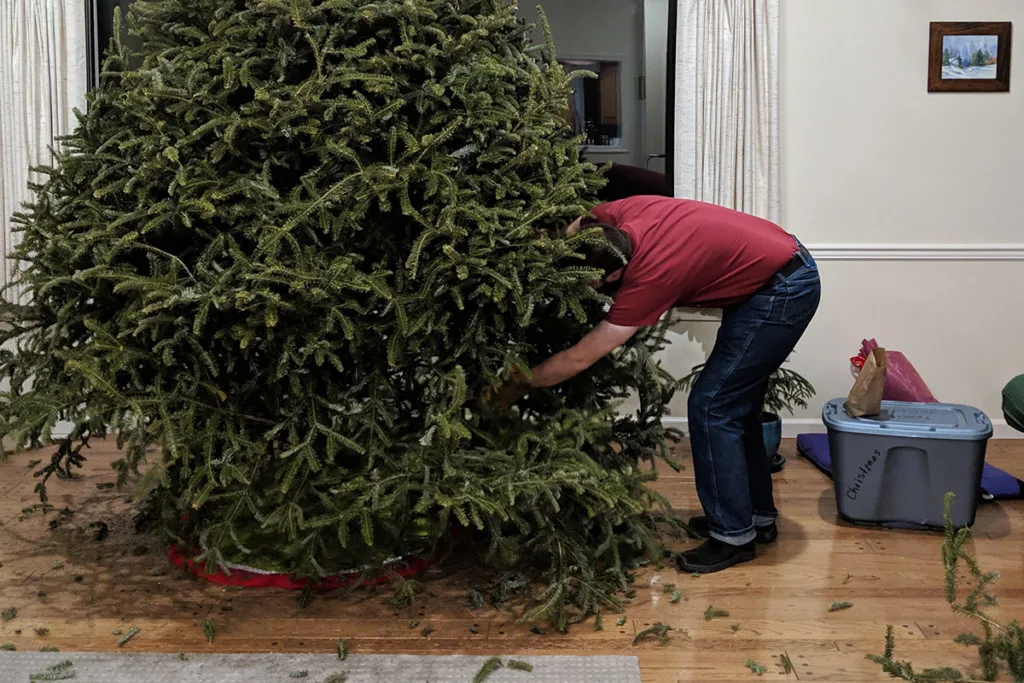
Some tree recycling programs ask that you cut the tree into smaller pieces. Call wherever you will be recycling your tree to find out what their requirements are.
Ditch (Or Upcycle) The Christmas Tree
Now that your tree is prepped for it’s second life, let’s take a look at your options.
1. Let Your Town Dispose of Your Christmas Tree
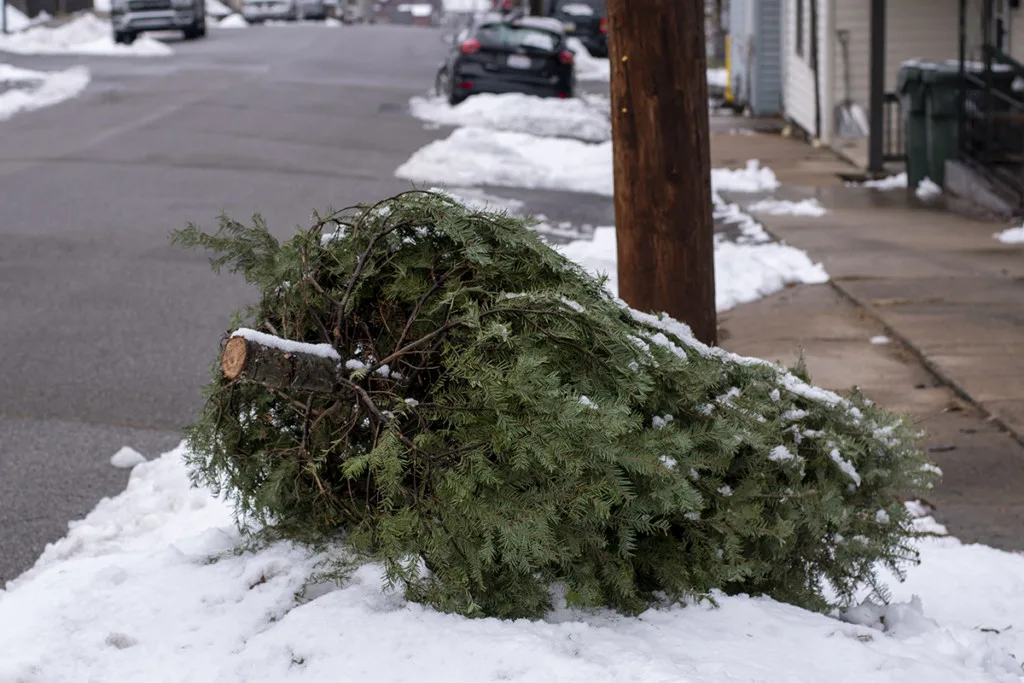
One of the easiest ways to dispose of your Christmas tree is to let the town handle it. So many towns these days have a tree recycling program. Most offer free curbside pickup. And more and more often, the trees are part of a local mulch and compost program.
The Christmas trees are picked up by the town and mulched, and the mulch is then offered to residents at a reduced cost or sometimes free. Call your local town offices to find out how Christmas tree recycling is handled where you live.
2. Chip It
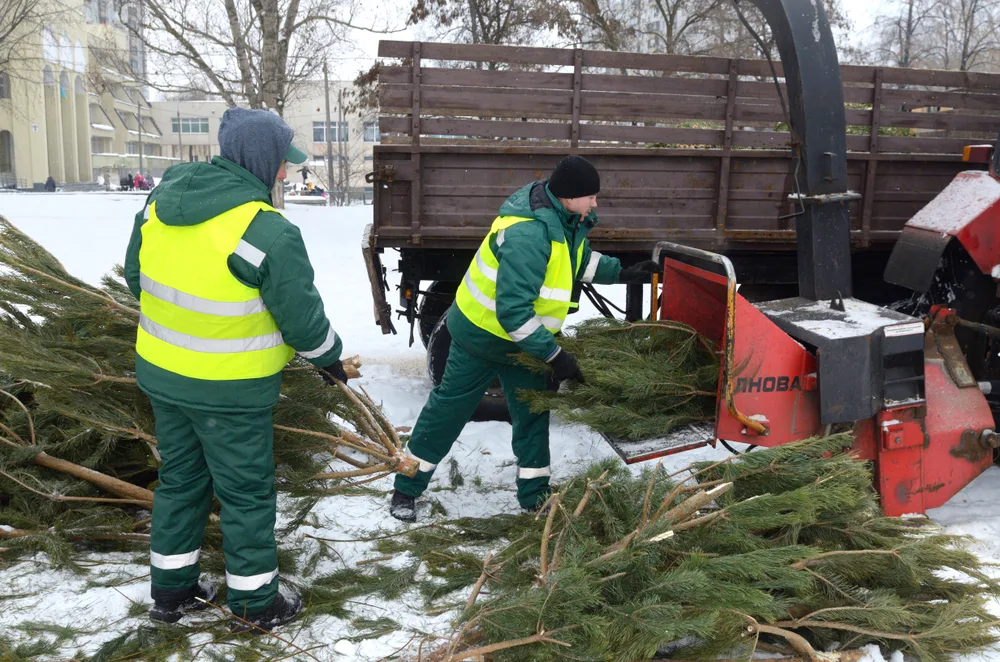
If you own or have access to a wood chipper, the easiest way to dispose of your tree is by turning it into free mulch. You can use your Christmas tree mulch around your garden.
3. Compost It
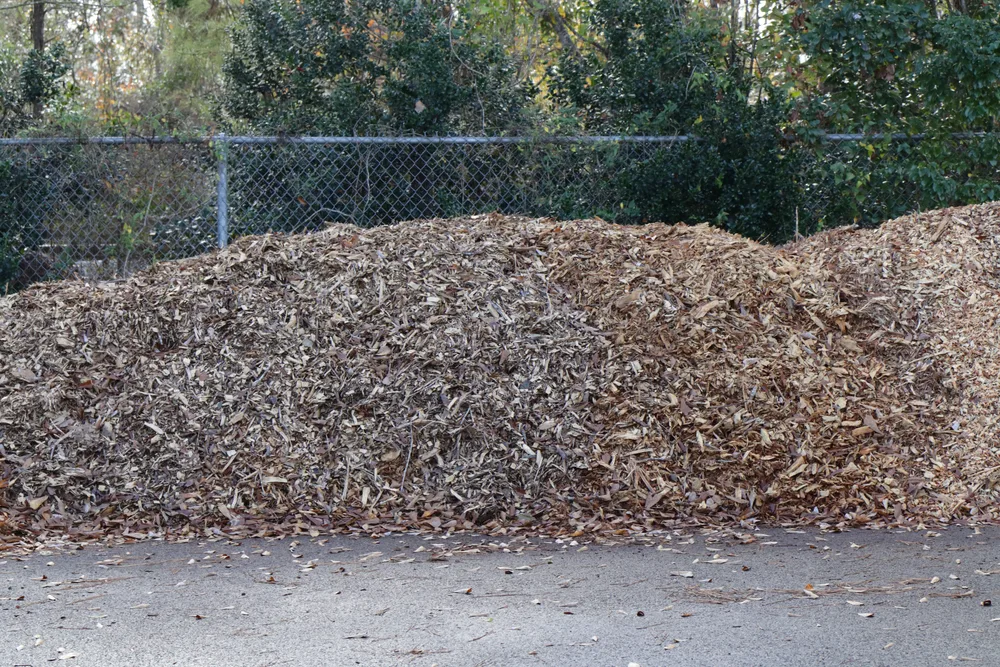
If you have a wood chipper, you can compost the resulting mulch from chipping your tree. Larger composting facilities may also offer tree composting for free.
4. Burn It
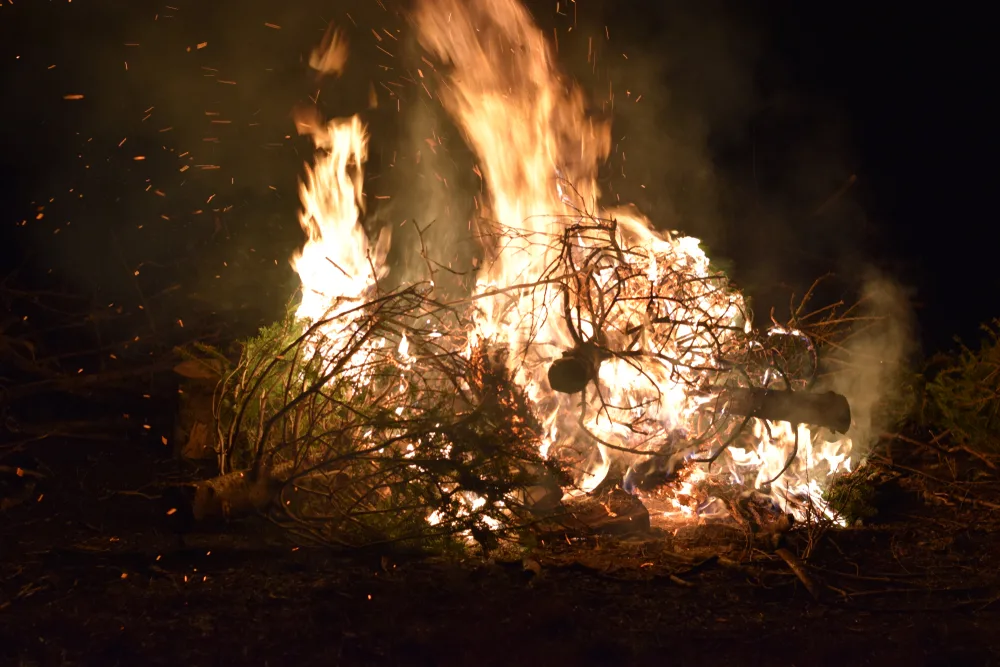
One of my favorite things about having a real Christmas tree is enjoying it in the summer too. We like to save our Christmas tree and burn the branches and trunk whenever we have an outdoor fire. The smell of burning pine is wonderful and it’s like having a little bit of Christmas in the summer.
5. Return it to the Forest
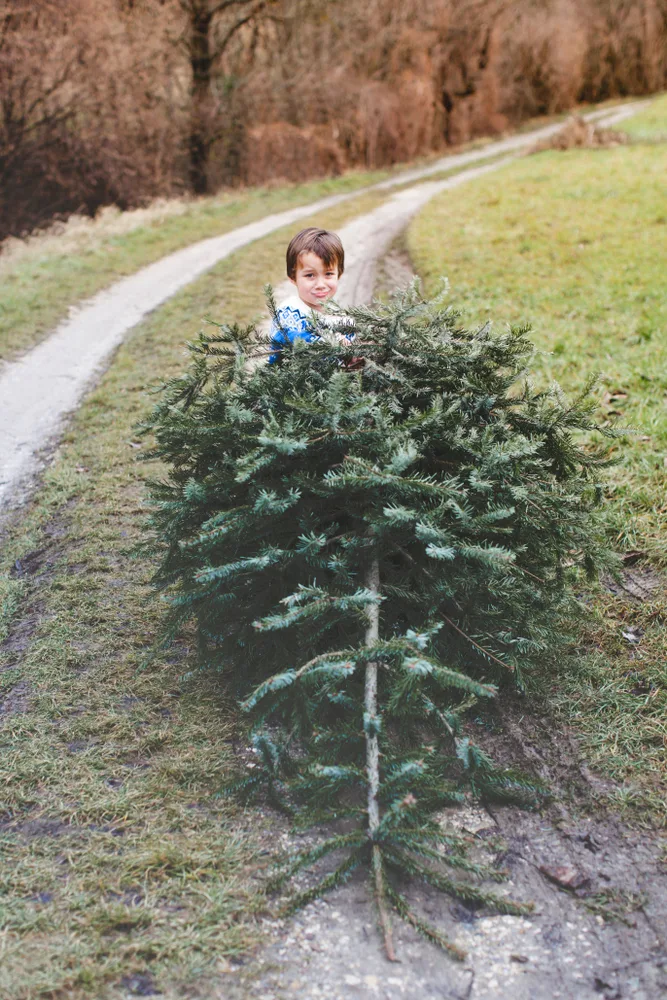
Many of us get our Christmas trees from a Christmas tree farm rather than out in the woods. But once you’re done with it, putting your Christmas tree in the forest is a great way to give small animals a place to live.
You don’t have to stick to the woods either; place your old Christmas tree in a hedgerow or among the brambles. Anywhere there are birds and squirrels and other small creatures, it’s sure to be appreciated.
6. Drown Your Tree
Yup. Drown it.
When it comes to human-made lakes, there isn’t a whole lot going on at the bottom. All of this open water makes it harder for young fish and other aquatic life to find refuge from bigger predators. Tie a length of rope around the tree trunk and attach a brick or cinder block to the tree. Take your tree for a little boat ride, push it overboard mafia-style and send it to sleep with the fishes, literally.
No lake? Call your local conservation office or state park; some larger parks with lakes collect tree donations.
7. Give It to a Goat
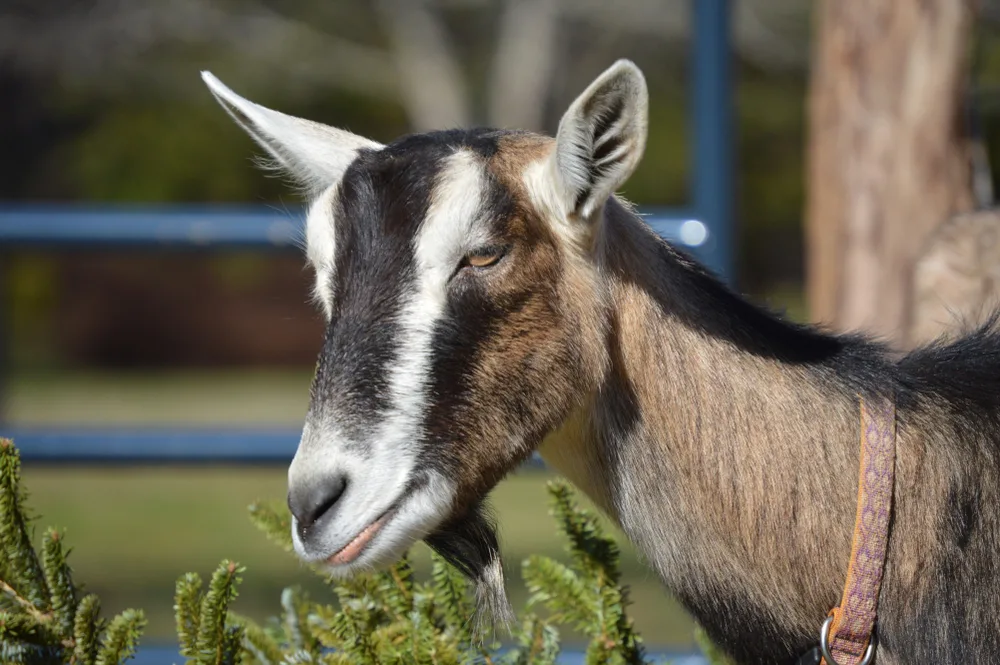
I know, this one had me scratching my head as well. But this time of year, many local goat farms accept undecorated Christmas tree donations. The trees are apparently a tasty treat for the goats as well as a natural de-wormer.
Looking at my tree, I’ve never had the urge to nibble its needles, but then again, I’m not a goat either. This might be my favorite way to dispose of a Christmas tree.
8. Put Your Tree to Use in the Garden
Most evergreens’ natural branch patterns make excellent climbing structures for plants like peas, beans, and other climbing legumes. If you’ve got a sturdy tree, you could even train your cucumbers up its needle-less branches.
You can ‘plant’ your Christmas tree in the garden now, and in the spring plant all of your climbing plants around it. By summer, your tree will be green again with peas and beans galore.
9. Protect Tender Plants from Snow
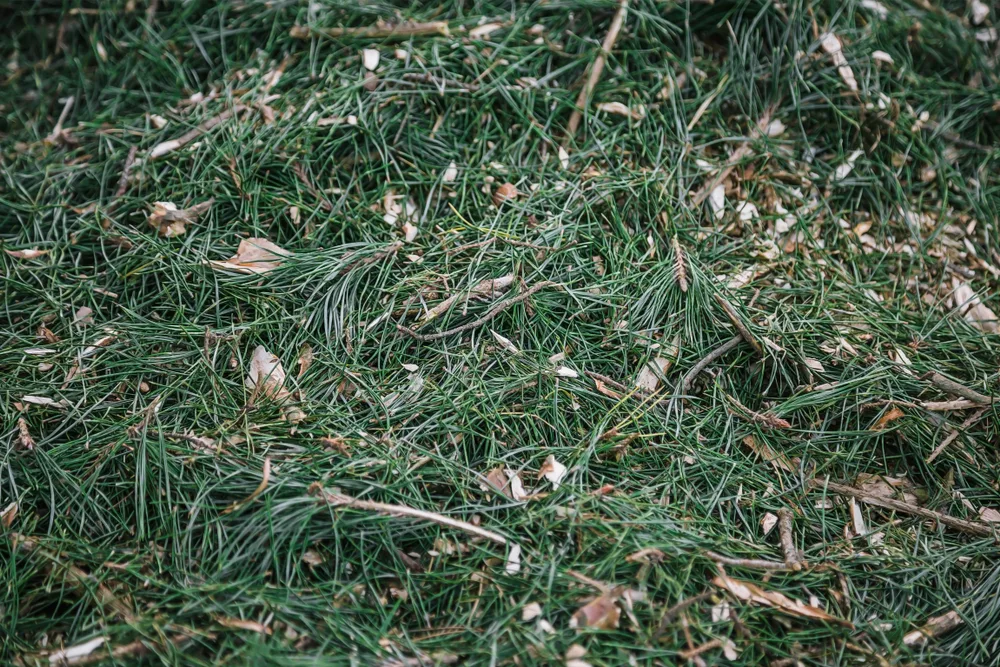
You can even cut the branches from your tree and arrange them around tender shrubs to protect them from wind and snow.

10. Call Your Local Wildlife Rehabilitation Center
Many of these facilities need to mimic natural habitats for the animals in their care and will gladly accept undecorated Christmas trees. Check in with your local wildlife rehabilitation center to see if they are accepting donations.
11. Local Scouts

Not only do many scouting troops sell Christmas trees, but many also offer a tree pick up service for a small donation to their group. The trees are then taken to a recycling center. Check with local scouting groups for more details.
12. Dispose of Your Christmas Tree at the Zoo
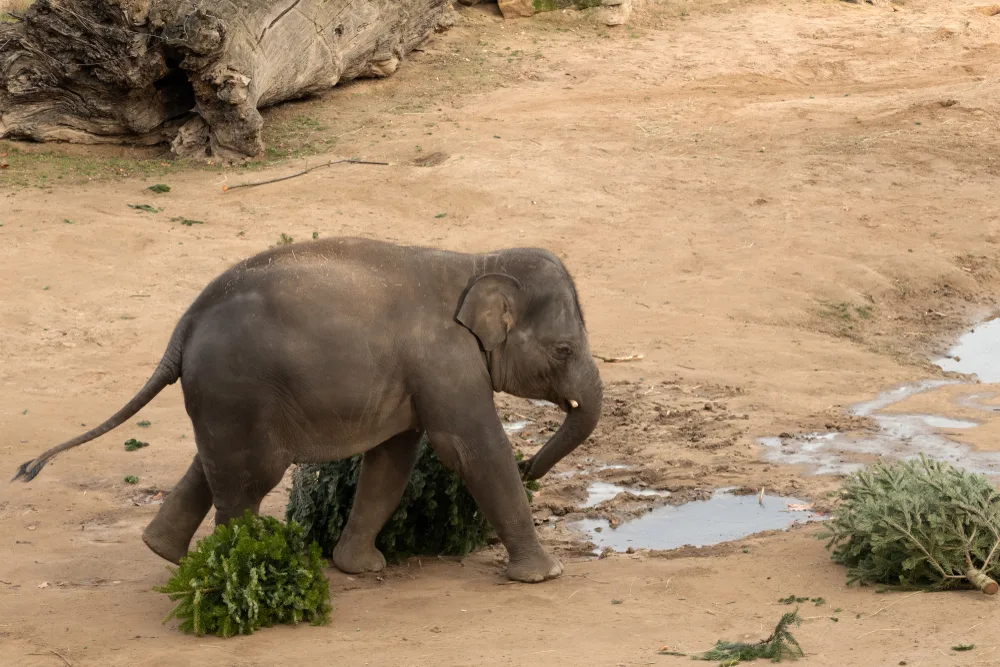
If you live close to a zoo, give them a call. Some zoos will accept Christmas trees for the animals to play with or eat. Why stop with goats? Maybe you’d like your tree to be shredded by a lion or mauled by a bear.
13. Soil Erosion Barrier
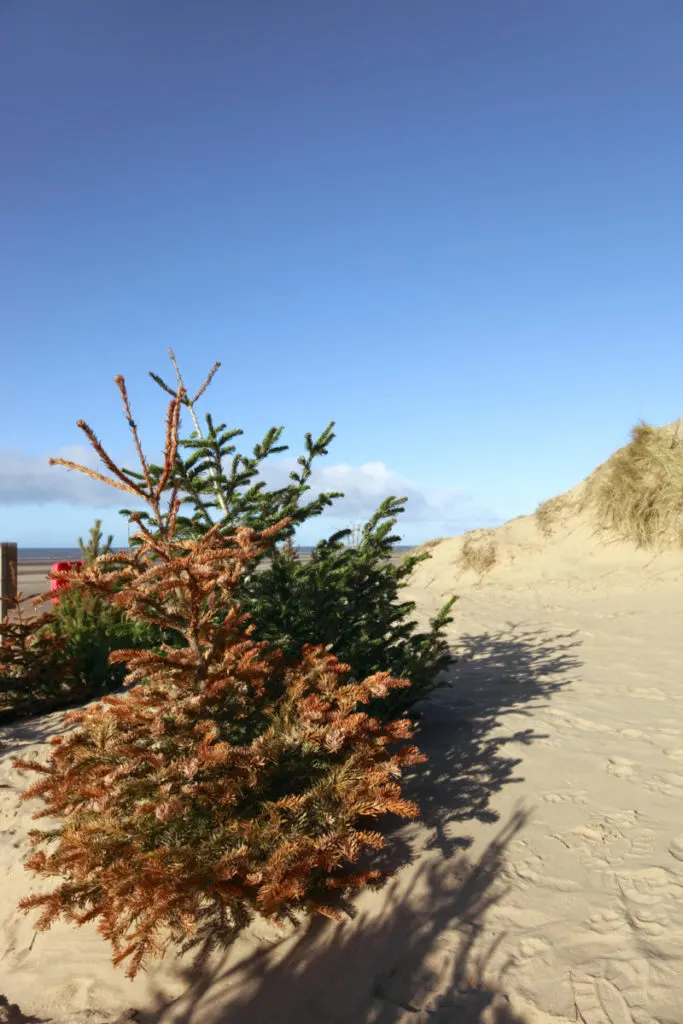
If you live along the coast, donate your tree to be used as a soil erosion barrier. Some coastal states use collected trees during floods. Again, the best place to start to find out how to donate is by calling your town’s municipal offices.
14. Give Your Tree to the Birds
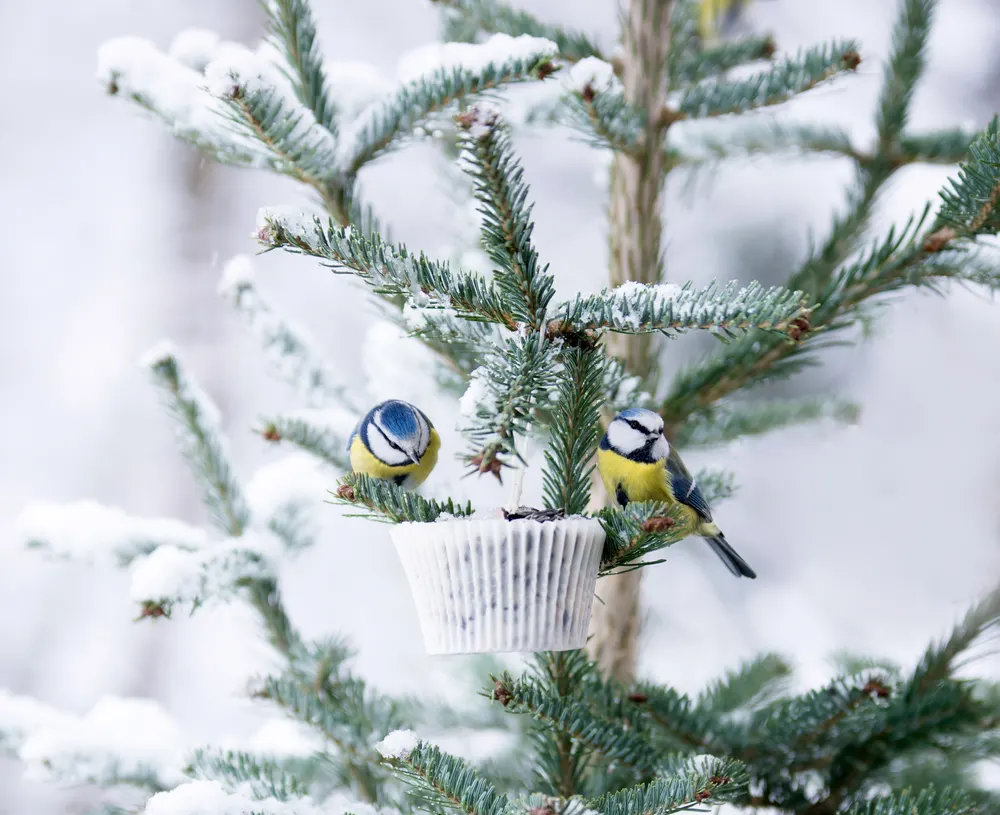
Finally, if the winter doldrums have got you down, you may want to consider this fun DIY project. Turn your entire tree into a bird feeder.
Get started bird-watching as a family or help out your feathered friends if you are already a diehard birder.
During the winter months, birds that winter over always appreciate having an easy food source, especially during periods of heavy snowfall.
First, you’ll have to decide on a location.
Your tree will be slowly losing its needles and turning orange as it starts to die, so for some folks; it may be preferable to pick a spot on the lawn that’s out of sight. However, if you’re looking forward to seeing the lovely flash of a cardinal’s red wing against the snow, pick a spot that’s visible from your house.
You may also want to take into consideration your weather. If you have a nice spot that’s sheltered from the wind, that would be a good choice for your natural bird feeder tree.
The easiest way to set up your tree is simply to lay the tree down on its side – no fuss, and it’s easier for the smaller family members to decorate.
However, for the full effect and a better view, consider leaving your tree in the tree stand or create a tree stand.
Nail a couple of 2x4s onto the trunk in an X shape. If you live in a particularly windy area, you could even tie the tree down with a bit of rope and a few tent stakes.
Now that you have your tree set up, it’s time to decorate it – again! Only this time, you’ll be filling it with delicious treats for the neighborhood birds and squirrels.
Here are a few ideas to get you started:
- Popcorn and cranberry garland – if you already made a garland for your tree, go ahead and leave it up. Remove the string from the tree once most of the food is gone to prevent your feathered friends from getting caught in it.
- Suet is always appreciated in the winter months; purchase suet blocks to hang on the branches or have a go at making your own suet balls by mixing birdseed with crunchy peanut butter, rolled oats, and shortening or lard.
- Fresh fruit – many birds enjoy fresh fruit and will happily return daily if they’ve found a reliable food source. Hang sliced citruses such as oranges or tangerines. Bananas and apples are also good options.
- Birdseed ornaments – fill your tree with homemade birdseed ornaments. A few simple kitchen staples are needed, but these make a fun snowy afternoon project.
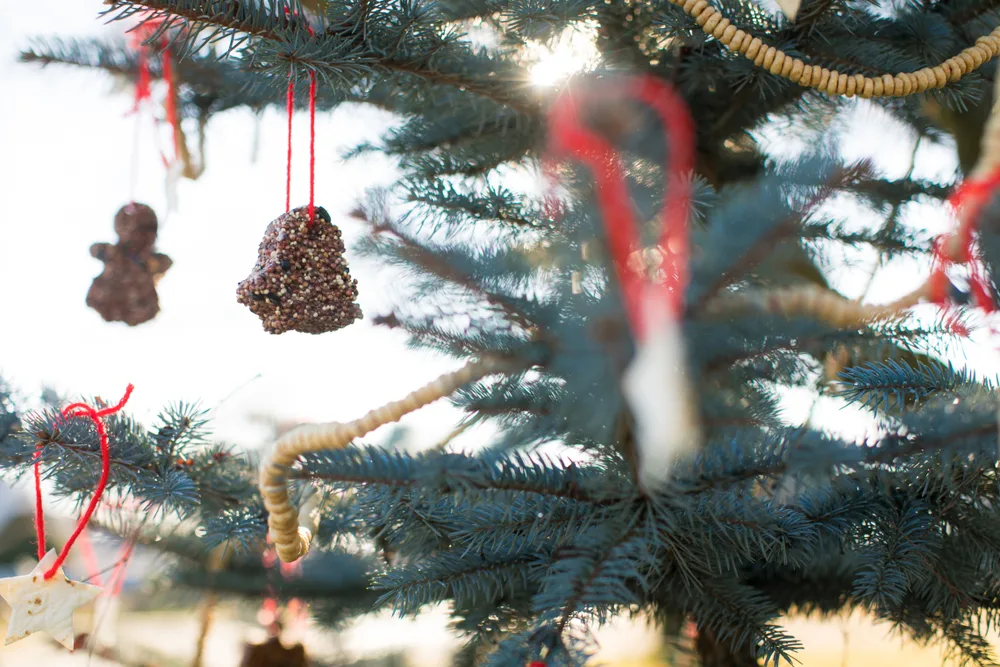
- Make small soda bottle bird feeders to hang on your tree. Cut two holes on either side of a soda bottle and slide a wooden spoon through the holes. Fill the bottle with birdseed and hang it on your tree.
- Cover pine cones in peanut butter and roll them in birdseed. Add a loop of twine to make it easy to hang on the tree. These are easy enough for the smallest of hands to help.
- Cheerios garland – another easy way to decorate your bird feeder tree is to string Cheerios cereal on some cotton string. Again, once most of the cereal has been eaten, you’ll want to remove the string.
A New Christmas Tradition
Who knows, perhaps turning your aging Christmas tree into a backyard bird feeder will become an annual family tradition. And you may be surprised to find more than birds visiting. With such a delicious tree you may look up from your morning coffee to find deer enjoying a few tasty snacks as well.
No matter where you live, you can dispose of your Christmas tree in a way that recycles or gives back to the environment and your community. Now that’s a great way to finish off the holiday season. And don’t worry, you’ll stop finding tinsel on everything by Easter.
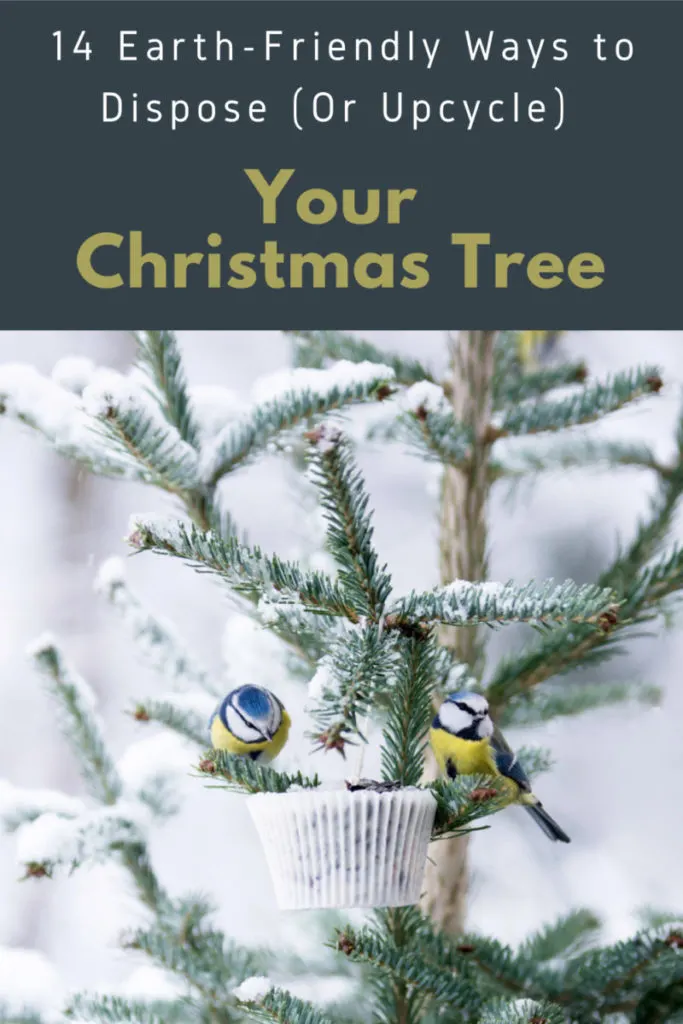

Get the famous Rural Sprout newsletter delivered to your inbox.
Including Sunday musings from our editor, Tracey, as well as “What’s Up Wednesday” our roundup of what’s in season and new article updates and alerts.


